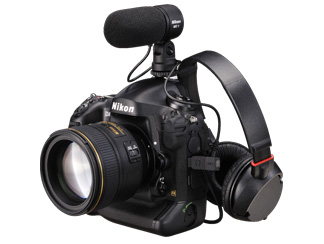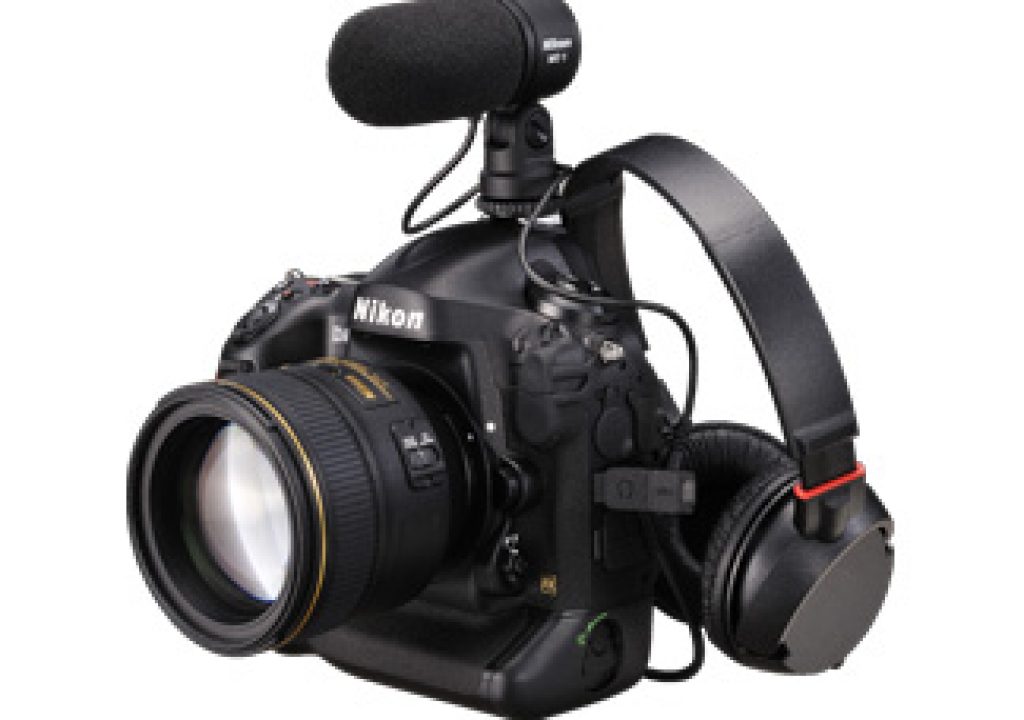
Nikon have just unveiled the new D4 and with it comes some significant improvements in the video functionality. When Canon launched their new EOS 1D X they too included a large number of video improvements, enough for a full article about them. Canon arguably started the so-called DSLR revolution with the 5dMK2 but can Nikon beat them at their own game ? Let's take a look at what the D4 has to offer in this area.
{C}
Uncompressed Video Output Through HDMI
This is a pretty big deal. The D4 is the first DSLR to feature uncompressed video output from the HDMI port for the purpose of external recording or monitoring. Previous cameras have allowed external monitoring but not recording. Film makers now have the option to skip the heavy H.264 compression of files recorded to the CF or XQD card and use an external recorder like an Atomos Ninja or a Sound Devices Pix240 to produce Apple ProRes or AVID QNxHD files.
During HDMI output the LCD on the back of the camera can remain active, another unique feature. This allows someone to be operating the camera via the LCD and simultaneously recording with an external device, or monitoring from another screen or video village.
3.5mm Stereo Headphone Jack
The D4 is the first of the major DSLRs to feature a headphone jack specifically for monitoring the audio that is being captured in the camera. This is something that film makers have been asking for and Nikon has delivered where Canon did not with their 1D X. For really high quality audio you'd want to be using an external recorder but for run and gun solutions using a hotshoe mounted mic, having the ability to monitor the audio is a huge benefit.
Audio Controls
A dedicated Audio control menu allows adjustment of the audio levels. It is not yet clear though whether you will be able to adjust these on the fly during recording via levels overlayed on the video image as well. I hope the levels are not limited to the menu.
Multi-area Mode
Multi-area Mode is a new feature that we have seen implemented in a few previous cameras from Panasonic and also interestingly the Canon Rebel camera. Nikon are making a much bigger deal about it though so it would seem that Nikon have maybe spent some time on making this a main feature.
The FX format uses the full size of the sensor to record the HD video but switching to DX mode will apply a 1.5x crop to the video thereby reducing the depth of field but also lengthening the effective focal length of your lens by a factor of 1.5. Nikon have takne things one step further though with a third 2.7x crop mode which still allows a full 1080 30p video to be recorded. All of a sudden your 200mm lens becomes a 540mm !
Video Frame Sizes
- 1,920 x 1,080; 30p (progressive), 25p, 24p
- 1,920 x 1,080 crop; 30p, 25p, 24p
- 1,280 x 720; 60p, 50p, 30p, 25p
- 640 x 424; 30p, 25p
Recording Time
The D4 can record up to 20 minute long video clips in HD and no longer than 29 min. 59 s in lower resolutions. Exceeding the 29 min. 59 s limit would subject the camera to huge taxation in Europe. The Canon 1D X is subject to the same limits.
Auto Focus
In addition to manual focus, four modes are available, including normal, wide area, face detection and subject tracking, which uses fast contrast detect AF focus while recording video and in live view. Of course there are many cameras offering contrast detect AF in video recording, Sony probably having the best at the moment but none of them have really shone yet. It'll be interesting to see if Nikon can change that and come up with something remotely useful for professional uses. A further problem is the AF motors in the lenses are not designed to be silent and the sound varies greatly from lens to lens. In some cases it would easily be picked up by any on board or hotshoe mounted microphone.
B-Frame H.264 Recording
B-Frame or 'Bi-predictive picture' frames are used in the encoding of the H.264 files. This is the same encoding process as used in the video files from the Nikon D7000. I could not find out how previous D3s files were encoded though. Several websites are reporting the use of b-frame encoding on the D4 as an improvement but it still ranks as a lesser method than the All-I mode of the 1D X but better than the encoding on something like a 7D or 5dMKII.
Like what you read?
- Follow Dan on Twitter: @DanCarrPhoto
- Read more of Dan's writing: ShutterMuse.com
- Get a FREE photography eBook written by Dan

